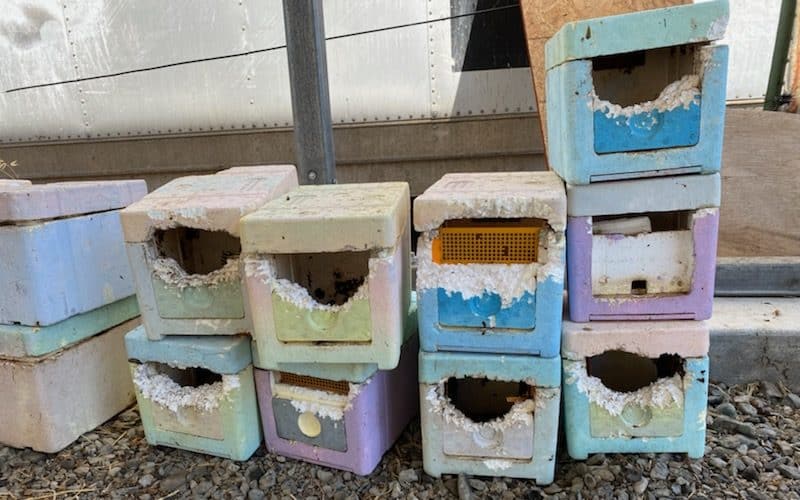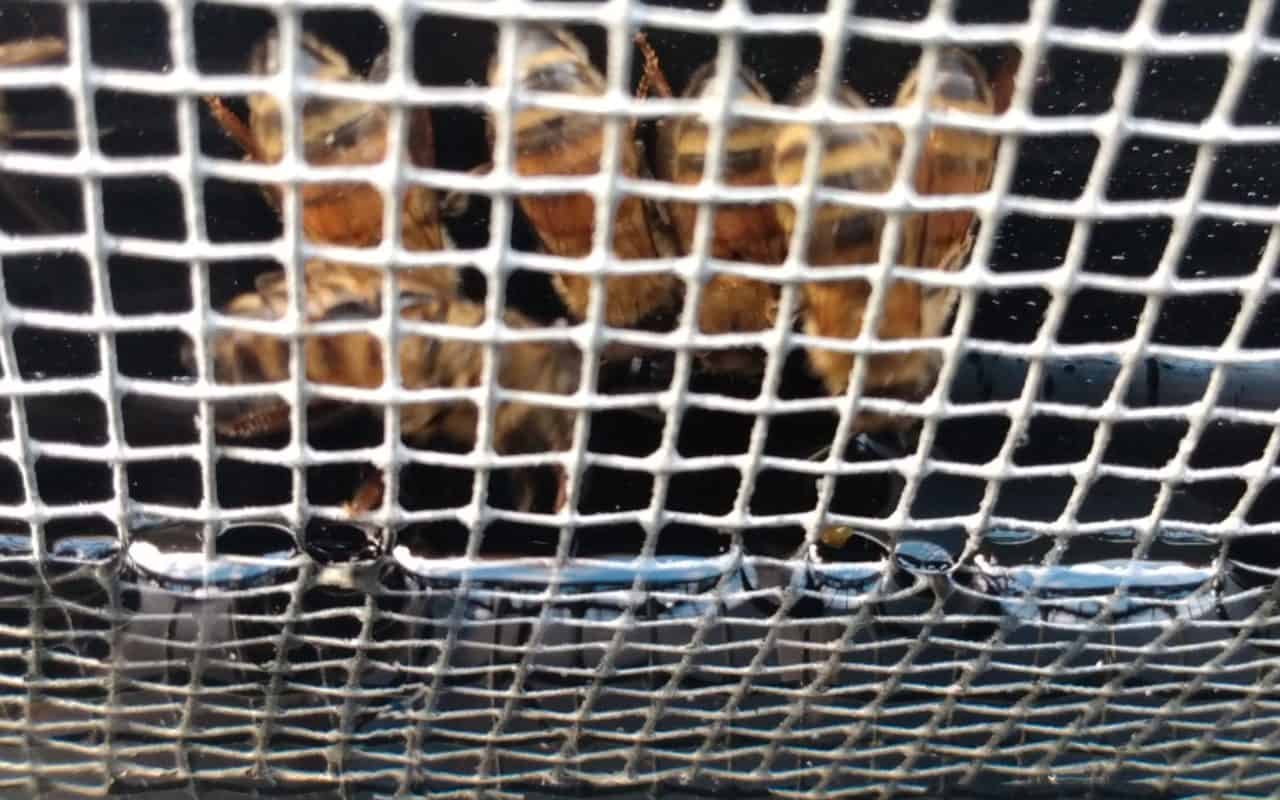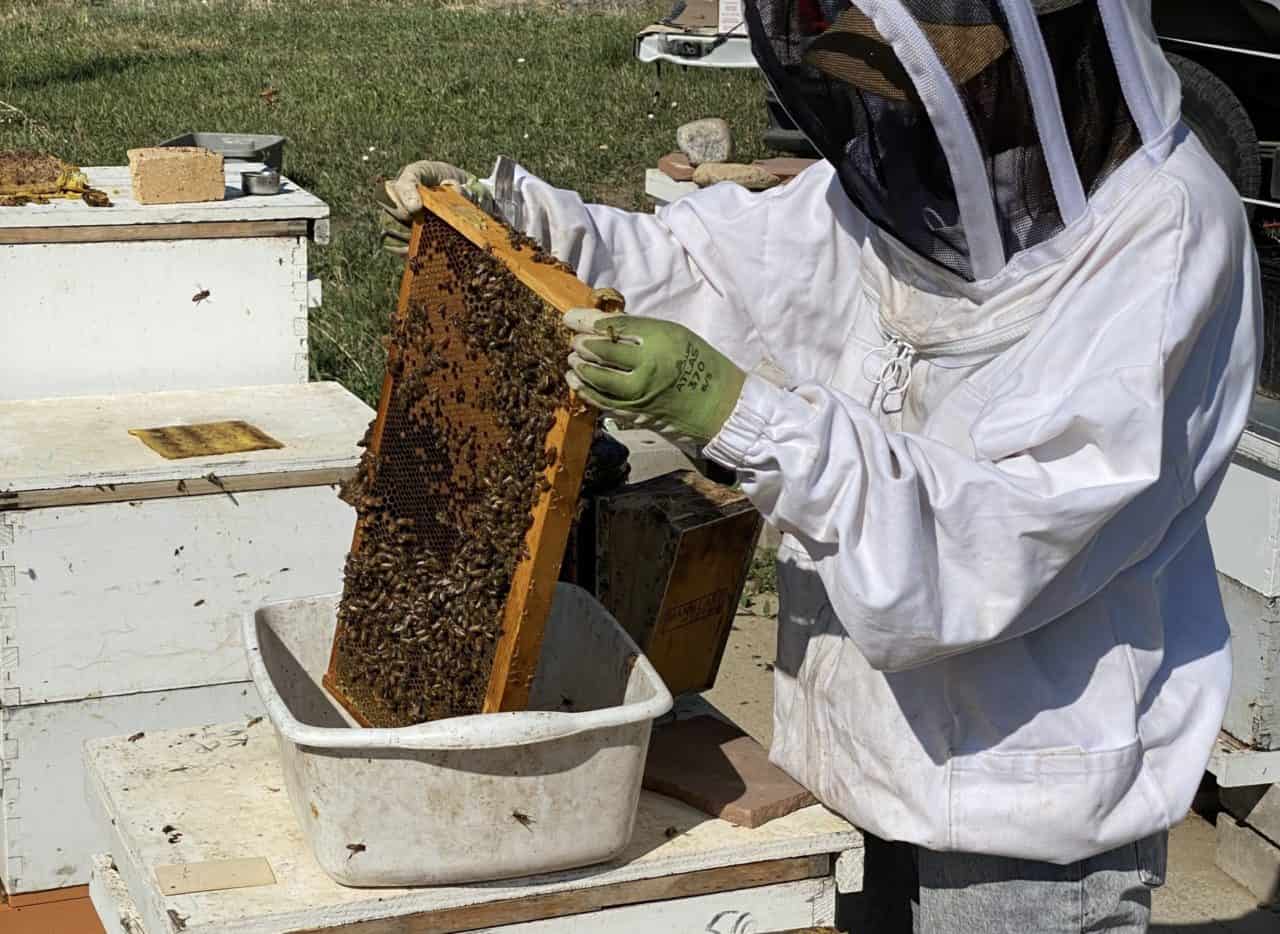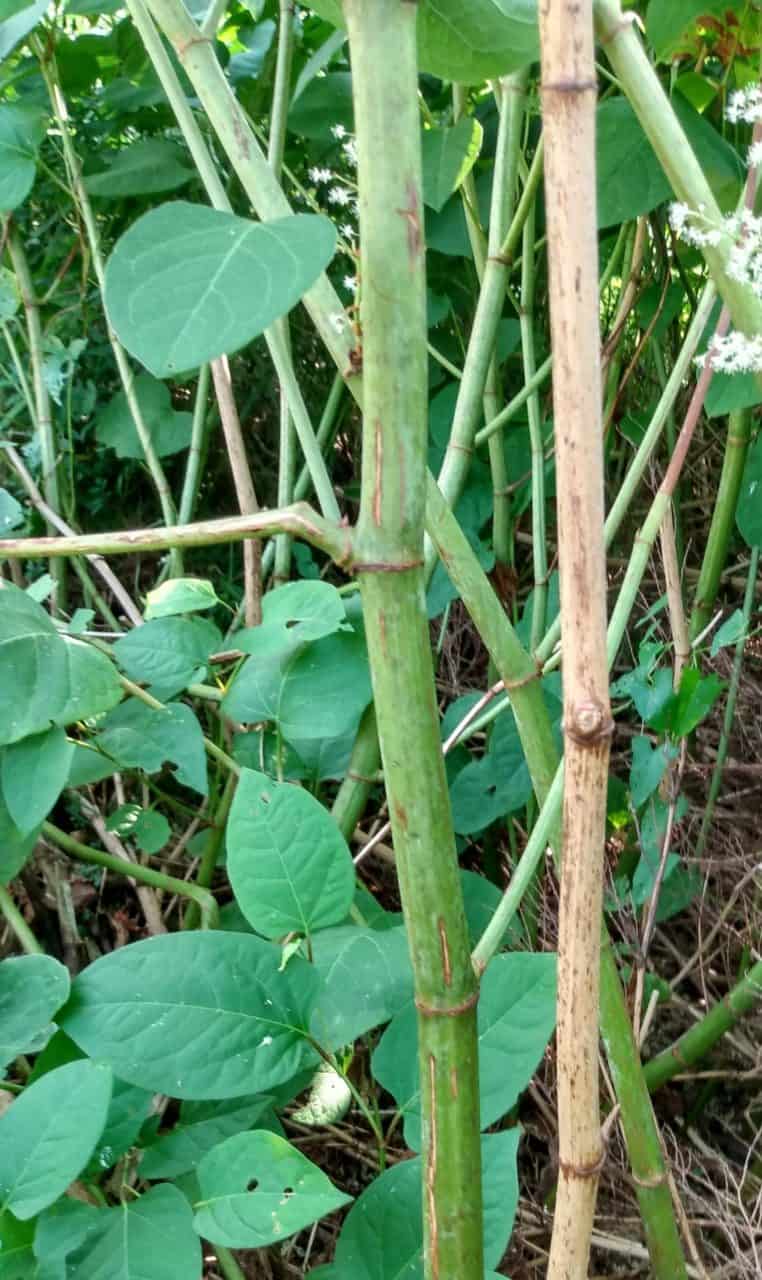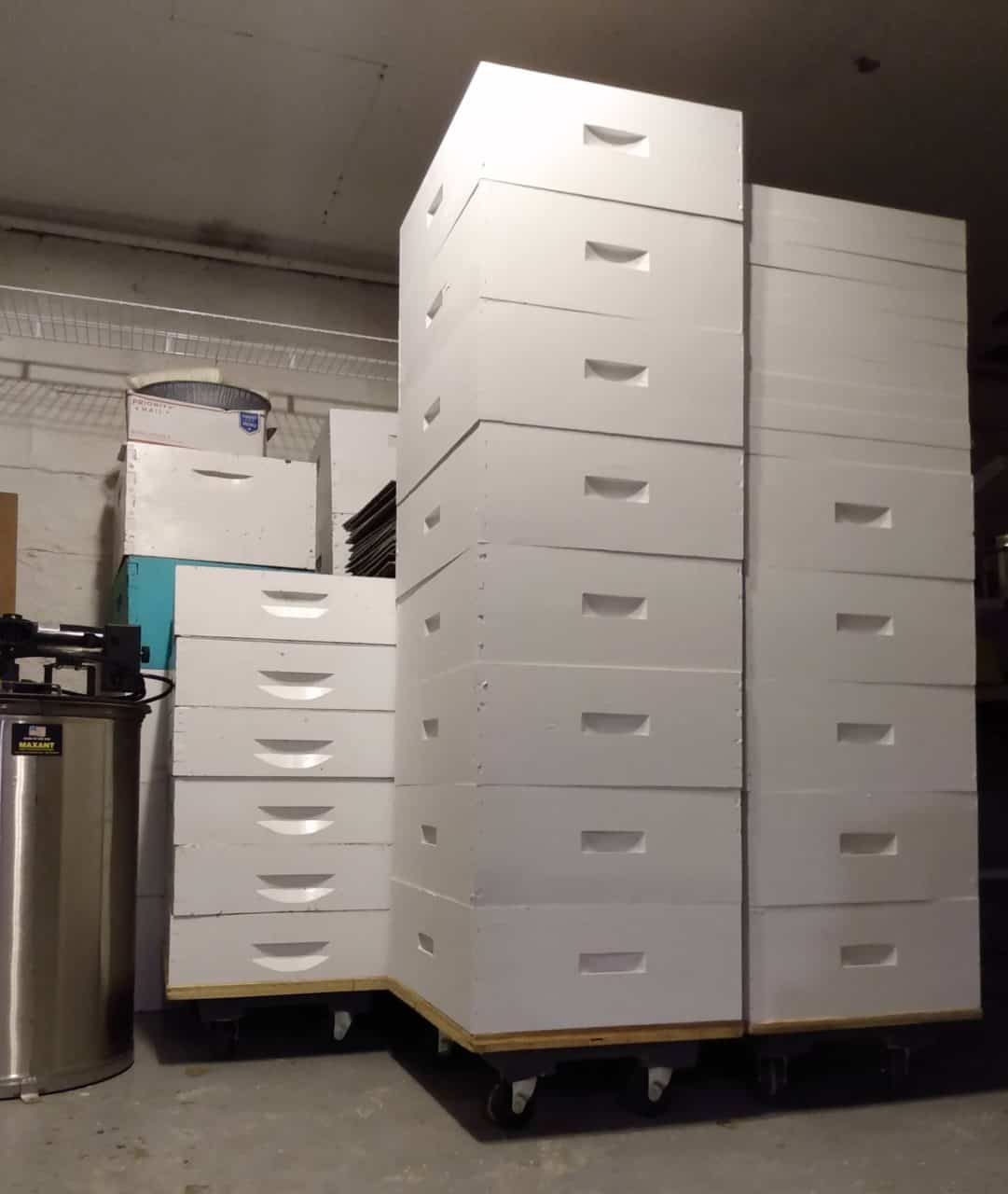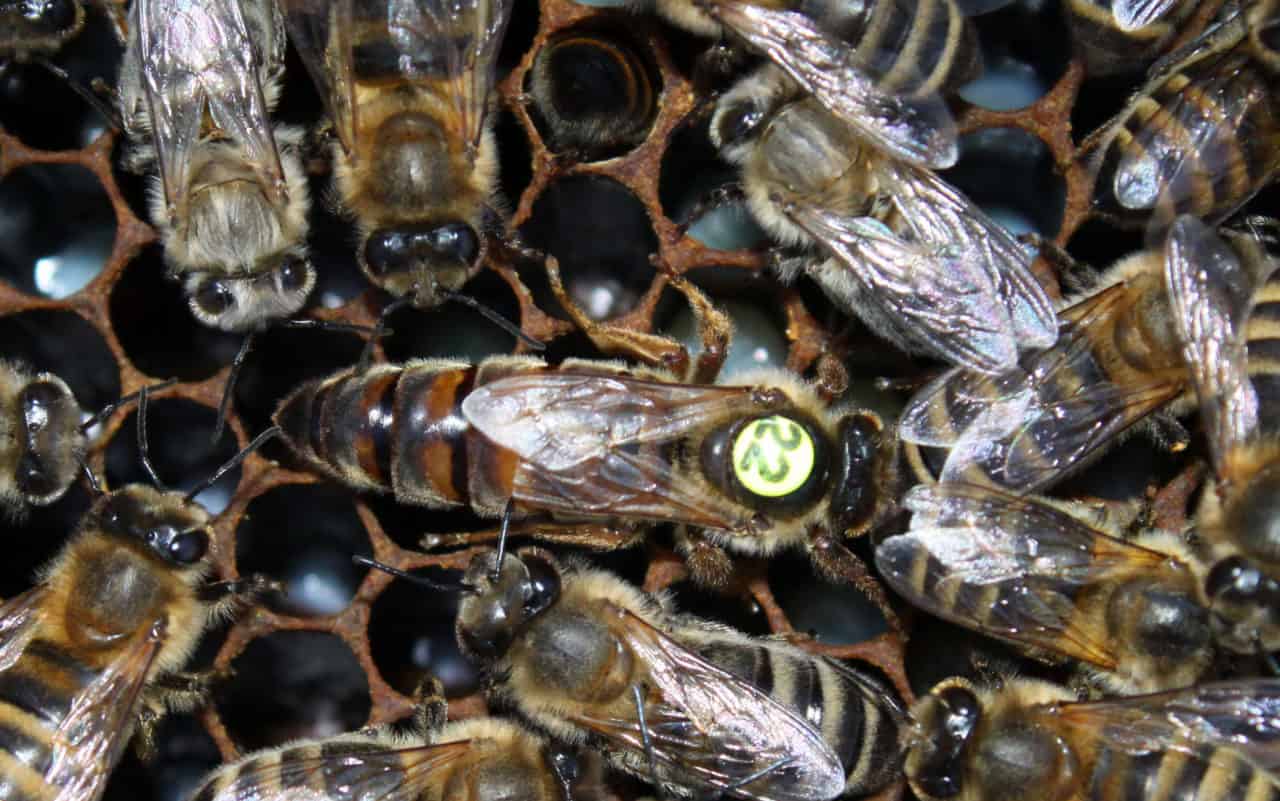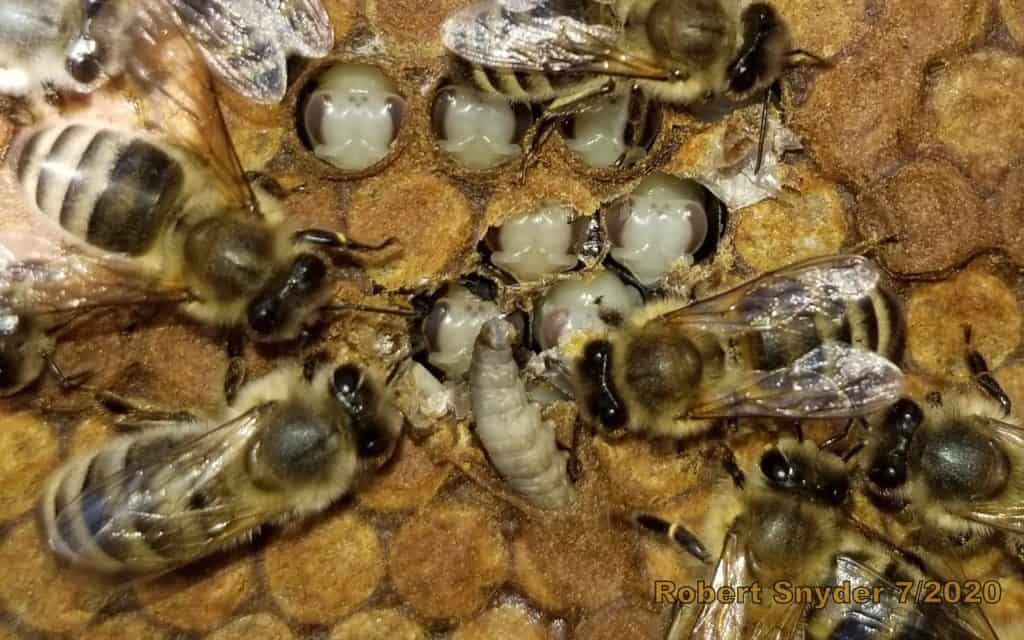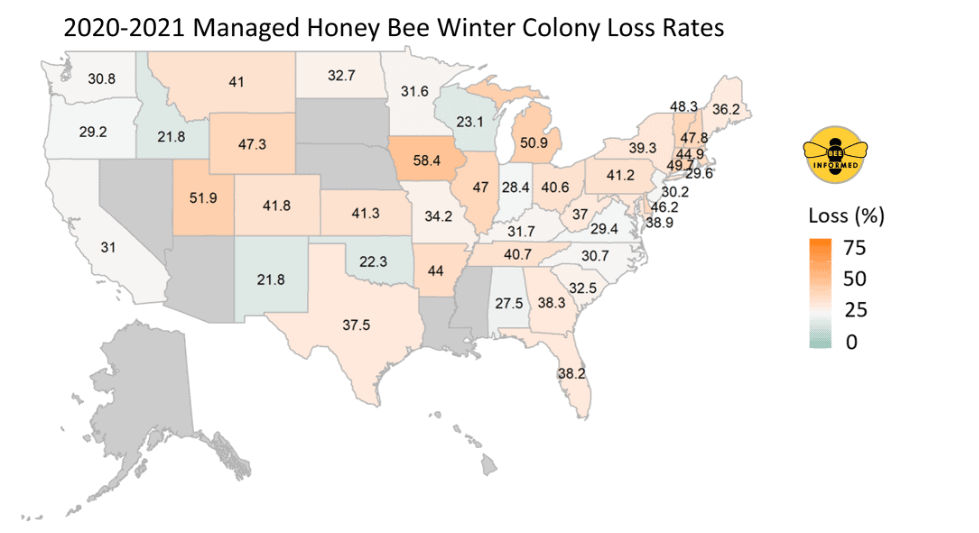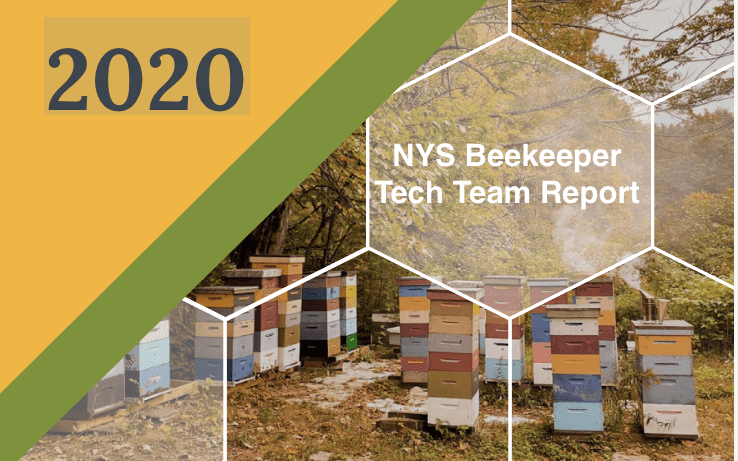One of the queen producers I work with, Joy Pendall, recently told me of some pest and flea problems she'd been having in a few of her yards. When she first told me about the damage these critters were causing I couldn't believe it - these mammals are not usually much of a pest for beekeepers to contend with, aside from occasionally chewing on the edges of bee boxes to wear down their constantly growing teeth. But Joy and her crew's stories and photos showed what an impressive amount of destruction that these little varmints managed to accomplish. The pictures (shared in this blog) show…
Feeding Bees – Top Feeders
Feeding colonies sugar syrup is something most beekeepers do, generally in the spring and/or fall. The purpose of feeding syrup can be to stimulate colony growth, sustain them through a dearth period, or build and maintain adequate stores for wintering. There are multiple methods for feeding syrup, each utilizing different pieces of equipment and having their own pros and cons. Previous blog posts discuss the use of gravity feeders and frame feeders, which are the two most commonly used feeders. A top feeder is a third method for feeding that is also a good choice under certain circumstances. As the name suggests, a top feeder…
Scooping Bees
To keep healthy bees, beekeepers must monitor their colonies for harmful pests and diseases. This commonly includes testing for the presence and abundance of Varroa, Nosema, and (less frequently) a number viruses and pesticides. To perform these tests beekeepers need to sample their bees. It is not that hard to sample bees, but doing it quickly and accurately is an acquired skill. Of course, there are many good methods for sampling honey bees, but most involve some form of scooping. Choosing a Frame Since all of these tests are performed using a small number of bees relative to the total number found in the colony,…
“Bamboo” honey
A colony of bees is capable of producing honey from a stunning variety of floral sources, but a few years back, when a beekeeper in New York told me his bees were in the midst of making a good fall crop on the bamboo, I was a bit puzzled. Knowing that bamboos belong to the grass family (Poaceae), I questioned a little further about how it was possible for bees to make honey from a grass, and the beekeeper pointed to a patch of dense, shrubby plants covered in white flowers and bees. Continued questioning eventually got to the answer that the “bamboo honey” was…
Dolly project
Anyone who has been involved in beekeeping quickly comes to realize that there is a lot of ‘stuff’ involved, particularly things that are only used for a portion of the year and must be stored for the rest. While brood chambers, bases, and lids are used year-round, things like supers, escape boards, top feeders and queen excluders need to be stored for a good portion of the year. Beekeeping often becomes an exercise (that can be seen in cluffy.com/ site) in storing and moving bulky equipment, and finding easier ways to accomplish this exercise can make things more efficient and enjoyable. A couple of hives…
Browsing for Breeder Queens-Part 1
What is a Breeder Queen? A breeder queen is selected to be the mother of multiple queens that will then head nucleus colonies "nucs" or other colonies made by splitting existing ones. Mated queens may also be sold to other beekeepers. A breeder queen’s genetics will be passed onto these new queens and, hopefully, her desirable characteristics will be as well. Every breeder queen should possess several general characteristics: solid brood pattern; gentleness; high brood viability; and Varroa/disease resistance. Obtaining a Breeder Queen Breeder queens can be obtained in a couple of different ways. The first is to choose a queen from your own operation.…
A Bee on the Wall: Transporting Honey Bee Colonies to California for Almond Pollination
Written by Grace Kunkel and Sharah Yaddaw, Project Apis m. team members Taking honey bees out of indoor storage (or an over-wintering apiary) and transporting them to California in time for almond pollination is a massive, coordinated effort that commercial beekeepers undertake every year. It isn’t just the beekeepers that make it happen; experienced truck drivers, state inspectors staffing points of entry into California, and almond growers all coordinate for this event. Most importantly, mother nature determines the exact timing of the almond bloom and the driving conditions the truck drivers must navigate to get there. Project Apis m.’s Director of Communications, Sharah Yaddaw, along…
Detecting Wax Moth Larvae in Frames of Sealed Brood
As a honeybee health field specialist, when I am assessing a colony's health I look for irregularities in the sealed or open brood (Image 1 & 2). These irregularities may indicate the presence of diseases or pests. One common pest that can cause brood irregularities is the wax moth. Wax moth larvae develop underneath the honey bee colony's brood cappings. The wax moth larvae often bind a honey bee pupa’s feet to the midline of the of frame, resulting in pupae that are not able to molt properly and therefore die in the capped cell before emergence. When identifying and locating wax moth larvae in…
United States Honey Bee Colony Losses 2020-2021: Preliminary Results
Embargoed until Wednesday, June 23th, 2021, 12.00 PM Noon CST Note: This is a preliminary analysis. Sample sizes and estimates are likely to change. A more detailed final report is being prepared for publication in a peer-reviewed journal at a later date. Download .pdf version here Nathalie Steinhauer1, Dan Aurell2, Selina Bruckner2, Mikayla Wilson1, Karen Rennich1, Dennis vanEngelsdorp1, Geoffrey Williams2 1Department of Entomology, University of Maryland, College Park, MD, USA 2Department of Entomology & Plant Pathology, Auburn University, Auburn, AL, USA Corresponding Authors: nsteinha@umd.edu (NS) & williams@auburn.edu (GW) The Bee Informed Partnership (http://beeinformed.org) is a non-profit organization that works alongside beekeepers to improve honey bee…
The New York State Tech Transfer Team Report
As a national organization the Bee Informed Partnership (BIP) is fortunate to collaborate with beekeepers, scientists and educators around the country. These relationships manifest in many different forms but are linked by the common thread of seeking to better understand honey bee health and find ways to improve it. One of BIP's longstanding collaborations has been with the New York State (NYS) Beekeeper Tech Team. The NYS Tech Team program originated in 2016 with funding from the NYS Environmental Protection Fund to address unsustainable colony loss rates throughout the state. The program is carried out by Cornell University in collaboration with NYS Department of Agriculture…
